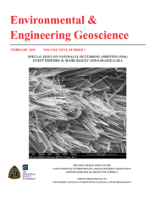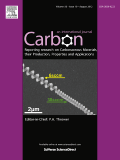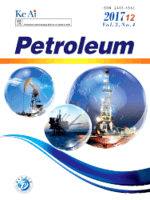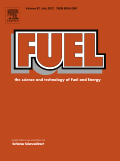
Geomechanics for Energy and the Environment
Scope & Guideline
Pioneering Insights for Environmental Challenges through Geomechanics
Introduction
Aims and Scopes
- Geomechanical Behavior of Geological Materials:
Research often investigates the mechanical properties and behaviors of various geological materials (e.g., clays, sands, rocks) under different environmental conditions, with a strong emphasis on understanding their responses to thermal, hydraulic, and mechanical (THM) loading. - Energy Applications:
The journal focuses on geomechanics in energy contexts, such as geothermal energy extraction, carbon capture and storage, and the stability of energy infrastructure. This includes studies on energy piles, reservoir performance, and energy transition challenges. - Thermo-Hydro-Mechanical Coupling:
Many articles explore the coupled interactions between thermal, hydraulic, and mechanical processes in soils and rocks, providing insights into phenomena such as induced seismicity, soil-structure interactions, and the performance of engineered barriers. - Innovative Modeling Techniques:
The journal highlights the use of advanced numerical and experimental modeling techniques to simulate complex geomechanical behaviors, contributing to improved predictive capabilities in geomechanical assessments. - Environmental Sustainability and Risk Management:
Research also addresses the environmental impacts of geomechanical processes, focusing on risk management strategies for energy production and waste disposal, including the assessment of landslide susceptibility and groundwater contamination.
Trending and Emerging
- Advanced Material Characterization:
Recent studies increasingly focus on the characterization of advanced materials, such as bio-cemented sands and nanomaterials, for improving geomechanical properties and performance in energy applications. - Multi-Scale and Multi-Physics Modeling:
There is a growing trend towards multi-scale and multi-physics modeling approaches that integrate various physical processes (thermal, hydraulic, mechanical, and chemical) to better understand complex interactions in geological formations. - Sustainability and Environmental Impact Assessments:
Research is increasingly oriented towards sustainability, focusing on the environmental impacts of geomechanical processes, including the assessment of induced seismicity and groundwater contamination related to energy extraction. - Innovative Energy Solutions:
Emerging themes include the development of innovative energy solutions such as geothermal systems and carbon capture technologies, reflecting the journal's commitment to addressing contemporary energy challenges. - Data-Driven Approaches:
The incorporation of data-driven methodologies, including machine learning and statistical analyses, is on the rise, enhancing predictive modeling capabilities and improving the understanding of geomechanical behaviors.
Declining or Waning
- Traditional Soil Mechanics:
Research focusing solely on classical soil mechanics without integrating energy applications or environmental considerations seems to be less frequent, as the field evolves towards more interdisciplinary approaches. - Static Modeling Approaches:
There appears to be a decline in studies relying solely on static modeling of geomechanical properties, as dynamic and time-dependent analyses gain more attention in reflecting real-world scenarios. - Localized Case Studies:
There is a noticeable decrease in the publication of localized case studies that do not contribute broadly to the understanding of global geomechanical phenomena or energy applications, as the journal encourages more comprehensive and applicable research.
Similar Journals

Geoenergy Science and Engineering
Bridging Disciplines for Energy AdvancementGeoenergy Science and Engineering, published by Elsevier in the Netherlands, is a burgeoning academic journal dedicated to the interdisciplinary exploration of geoenergy technologies. With ISSN 2949-8929 and E-ISSN 2949-8910, the journal serves as a crucial platform for disseminating research and advancements in the fields of energy engineering, geotechnical engineering, and sustainable energy practices. Spanning years from 2023 to 2024, it aims to publish high-quality original research, reviews, and case studies that address the pressing challenges and innovations within the realm of geoenergy. Although the journal currently holds modest Scopus rankings, it is poised to increase its impact and recognition in its respective fields, making it an essential resource for researchers, professionals, and students engaged in the urgent quest for sustainable energy solutions.

Energy Science & Engineering
Unlocking Potential in Renewable Energy and Risk ManagementEnergy Science & Engineering, published by WILEY, serves as a leading open-access platform for the dissemination of high-quality research and insights in the fields of energy science, engineering, and safety. Since its inception in 2013, this esteemed journal has gained recognition for its impactful contributions, reflected in its impressive impact factor and notable Scopus rankings. As of 2023, it holds a distinguished Q2 category ranking in both Energy (miscellaneous) and Safety, Risk, Reliability, and Quality, showcasing its vital role in advancing interdisciplinary collaboration and innovation. With an open access model, the journal ensures that groundbreaking research reaches a wide audience, fostering discussion and knowledge sharing across academia and industry. The scope of the journal encompasses cutting-edge topics related to energy efficiency, renewable energy technologies, and risk management, making it an essential resource for researchers, professionals, and students aiming to contribute to the evolving landscape of energy science and enhance societal sustainability.

ACS Materials Letters
Pioneering Discoveries in Chemical Engineering and BeyondACS Materials Letters is an esteemed peer-reviewed journal published by the American Chemical Society, emphasizing groundbreaking research and advancements in the fields of materials science, biomedical engineering, and chemical engineering. With a robust update and established reputation since its inception in 2019, this journal has rapidly ascended to the top tiers, achieving Q1 rankings in key categories such as Biomedical Engineering, Chemical Engineering (miscellaneous), and Materials Science (miscellaneous) in 2023. The journal boasts impressive Scopus rankings, including #14 in General Chemical Engineering and #19 in Biomedical Engineering, placing it among the elite publications in these domains. While not fully open access, ACS Materials Letters facilitates the dissemination of high-impact research accessible to academics and industry professionals alike. With its comprehensive scope and rigorous selection process, the journal serves as a vital resource for researchers and students eager to stay abreast of the latest innovations and technologies shaping materials science and engineering.

ENVIRONMENTAL & ENGINEERING GEOSCIENCE
Shaping the Future of Sustainable Engineering PracticesENVIRONMENTAL & ENGINEERING GEOSCIENCE, published by the Geological Society of America, Inc, is an esteemed peer-reviewed journal duly established to advance the fields of geotechnical engineering, environmental engineering, and broader earth sciences. With an ISSN of 1078-7275 and an E-ISSN of 1558-9161, this journal disseminates high-quality research and innovative methodologies that address pressing environmental issues and engineering challenges. As of 2023, it is classified in the Q3 category across various disciplines within earth and planetary sciences, highlighting its contribution and relevance within the academic community. The journal boasts an impactful trajectory, converging research from 1995 to 2024, and is strategically positioned to facilitate the exchange of ideas among researchers, practitioners, and students alike. With a commitment to fostering an understanding of geosciences in relation to environmental engineering, this journal is a valuable resource for those dedicated to developing sustainable solutions in our ever-evolving landscape. Readers can access published works through institutional libraries or relevant academic platforms, ensuring that groundbreaking research reaches all corners of the discipline.

Journal of Pipeline Science and Engineering
Connecting Innovations in Energy and Fluid FlowWelcome to the Journal of Pipeline Science and Engineering, an esteemed academic platform dedicated to the advancement of knowledge in the critical disciplines of energy, fluid flow, and mechanical engineering. Published by KEAI PUBLISHING LTD in China, this open-access journal has been a pioneer in its field since its inception in 2021. With an impressive ranking in the top quartiles across multiple categories—Q2 in Energy (miscellaneous) and Q1 in Fluid Flow and Transfer Processes, Mechanical Engineering, and Safety, Risk, Reliability, and Quality—this journal is committed to disseminating high-quality research to a global audience. Researchers, professionals, and students will find the journal's content invaluable as it addresses contemporary challenges and innovations in pipeline engineering and related sectors. The Journal of Pipeline Science and Engineering aspires to be the central hub for sharing cutting-edge developments and fostering collaboration within the community. Stay at the forefront of research and join us in exploring the vital contributions of pipeline engineering to sustainable development and safety.

CARBON
Exploring Innovations in Chemistry and Materials ScienceCARBON is a leading peer-reviewed journal published by PERGAMON-ELSEVIER SCIENCE LTD, focusing on the realms of Chemistry and Materials Science. With an impressive impact factor, CARBON is ranked within the top quartile (Q1) of both fields in the 2023 Scimago Journal Rank, remarkably securing the 18th position out of 463 in General Materials Science and the 22nd position out of 408 in General Chemistry. Since its inception in 1963, the journal has been dedicated to publishing high-quality research that advances the understanding of carbon-based materials and their applications. Operating from the United Kingdom, CARBON provides an essential platform for researchers, professionals, and students alike to disseminate their findings and innovations. Although not an open-access journal, it offers access options that maintain the integrity and high standards of academic publishing. As a critical resource in its field, CARBON continues to foster scientific dialogue and development, significantly impacting current and future research.

International Journal of Renewable Energy Research
Fueling the transition to a greener planet through research.International Journal of Renewable Energy Research (IJRER) is a distinguished peer-reviewed journal dedicated to advancing the field of renewable energy through innovative research and comprehensive analyses. Published by the esteemed INT JOURNAL RENEWABLE ENERGY RESEARCH, this journal has established itself as a vital resource for academics and industry professionals alike since its inception in 2011. With a focus on a wide array of topics in Energy Engineering and Power Technology and Renewable Energy, Sustainability and the Environment, IJRER has been recognized for its contributions, attaining a Q3 categorization in Energy Engineering and Power Technology and a Q4 rank in Renewable Energy for 2023. The journal is indexed in Scopus, demonstrating its global reach and impact, with notable rankings in both relevant categories. Researchers can access a wealth of valuable insights and findings that are crucial for fostering sustainable practices and technologies. Thus, IJRER plays a pivotal role in driving the future of renewable energy research and innovation.

Bulletin of Engineering Geology and the Environment
Elevating the standards of geotechnical engineering research.Bulletin of Engineering Geology and the Environment, published by SPRINGER HEIDELBERG, is a leading journal dedicated to the fields of Geology, Geotechnical Engineering, and Engineering Geology. With an impressive impact factor placing it in the Q1 category for both geology and geotechnical disciplines, this journal is recognized for its significant contributions to the knowledge and application of engineering geology practices. Since its inception in 1984, the Bulletin has provided a platform for researchers and professionals to share cutting-edge research, case studies, and innovative methodologies relevant to the challenges of understanding and managing geological environments. With a robust Scopus ranking—#32/321 in Geology and #43/229 in Geotechnical Engineering—this journal is an essential resource for academics and industry leaders alike, striving to advance the environmental engineering field. For those interested in accessing the latest research and developments, the Bulletin fosters a collaborative and informed scholarly community.

Petroleum
Exploring the depths of energy innovation and geological insights.Petroleum, an esteemed open-access journal published by KEAI PUBLISHING LTD, serves as a premier platform for disseminating high-quality research in the fields of energy engineering, fuel technology, geology, and related earth sciences. Established in 2015, the journal exemplifies innovation and scholarly rigor with a commendable ranking in the second quartile across multiple categories, including Energy Engineering and Geopolitics. With a focus on advancing knowledge and practices in the petroleum sector, it encourages submissions that encompass a broad spectrum of topics from exploration and extraction techniques to environmental impacts and sustainability measures. Based in Beijing, China, this journal's impact is further enhanced by its significant presence in the Scopus database, achieving impressive percentiles, such as the 95th for Geology and 93rd for Geochemistry and Petrology. The open-access model fosters unrestricted global collaboration and accessibility, making the latest research available to a diverse audience of researchers, professionals, and students eager to innovate and lead in the burgeoning energy landscape.

Fuel
Transforming Energy Challenges into SolutionsFuel is a premier international journal published by Elsevier Science Ltd, showcasing critical advancements and insights in the fields of chemical engineering, energy engineering, power technology, and organic chemistry. With a significant history dating back to 1922 and continuous publication from 1970 to 2025, Fuel holds an impressive position in the academic community, reflected in its top-tier rankings—Q1 in multiple categories including Fuel Technology and Chemical Engineering for the year 2023. This journal is dedicated to exploring innovative research and application of fuel technologies, driving forward the dialogue on sustainable energy solutions. Researchers and professionals alike will find Fuel to be an essential resource, providing access to high-impact articles that contribute to advancements in methodologies and applications, while navigating the complexities of global energy challenges.